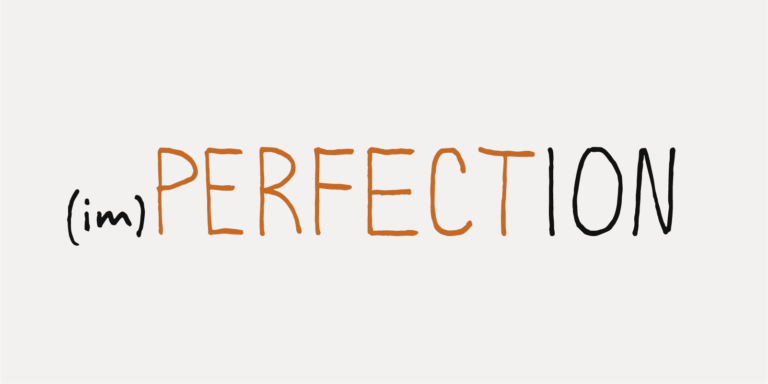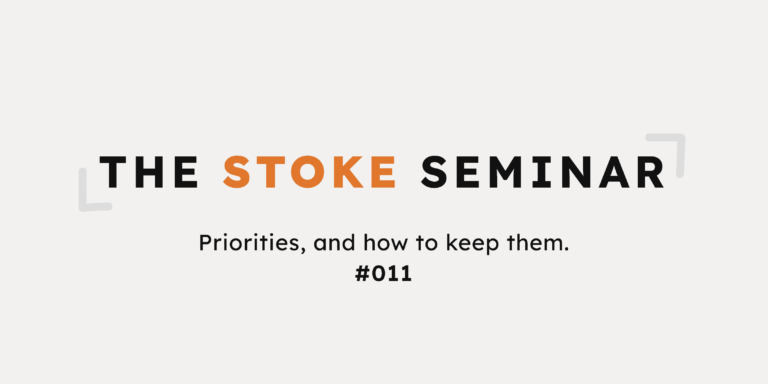How to ACHIEVE GOALS in 2023 (and take massive action!)
I know the feeling. Another year has somehow come and gone. The goals you set for 2022 either don’t exist, or lie dormant in your head. Maybe you made it as far as writing them down, but never got around to revisiting them over the past 12 months.
As you pull out the wrinkled sheet of paper or open up the note in your note-taking app, you’re reminded of who you hoped to become this year.
Chances are that all of your goals weren’t met. It’s likely that your daily habits aren’t perfect. Maybe you didn’t get rid of all your bad habits.
The fact of the matter is that every single goal is not always going to be met. Goals change throughout the year. Your circumstances may shift. Your interests and focus may vary. And they should!
Goals aren’t meant to be an end-point for progression. Goals motivate us to put systems and processes in place in order to get to a certain point. Goals encourage progress. If all else failed this past year, take pride in the progress you made towards the goals you set. Progress is growth, and growth builds us into the people we want to become.

Setting Goals
The first step to growth is to visualize your dreams and set goals accordingly.
The key to setting goals is finding the sweet spot between pushing yourself further, and maintaining realistic boundaries. If you’re making $30k this year, and your goal is to make $30m by 2024 – you better hit the gas station for a lottery ticket.
Goals can be intimidating and can even discourage taking action. If your goals are too far out of reach, your very first step might be too big to bridge the gap. But if your goals are achieved through consistently doing what you’re able to practice, you’re able to see the light at the end of the tunnel.
Keep in mind that goals are achieved through consistent implementation of systems and habits – not sheer luck or brute force.
Think about what things you can do DAILY that will get you closer to your fulfilling life. What kind of things can you strive to do each day to get there?
Hint: It involves writing.
It Starts with Writing
My number one tip for getting where you want to go in 2023 is this:
- Write. Every single day.
It may sound silly if your goals have nothing to do with writing, but I can promise you that whatever you do, writing is more involved in it than you think.
Writing is where ideas come to fruition. Ideas, thoughts, goals, and frustrations are all able to be fleshed out and dealt with in a calm and relaxed manner. Writing is key to any venture in life.
Physically documenting and measuring your action via writing will give you clearer focus and the ability to track your growth accurately.
How to Achieve Your Goals This Year
- Buy a pack of pocket-sized journals (I use these Moleskine notebooks)
- State your quarterly goals on the inside of the back cover
- Write a DAILY summary in your journal
- Document your wins and losses
- List tomorrow’s “top three to-dos”
Be honest with yourself each day. What did you do right? What could you have done better? How were you feeling and why?
When creating your to-dos for the following day, add at least one thing that will move the needle towards your goal.
What is one thing you can do each day to ensure that progress is being made? List that each day in your journal and make it happen every single day.
1. Where to Write
Deciding where to keep track of your daily action is ultimately up to you. Some people prefer putting the pen to paper. For others, that is simply too inefficient.
Personally, I prefer a mix of both methods and it just depends on what my intentions are. For anything with more length or detail, I type on my laptop. For daily review and documentation, I write in a small pocket notebook. Ultimately the choice is yours. There is no right and wrong, but I’ll share with you my reasoning for using both options.
Physical notebooks –
Writing my thoughts and actions for the day in a notebook gives me the greatest sense of clarity. It allows me to feel the things I did that day. It gives me more time to dwell on the things I accomplished and the things I failed to do. It allows for the most concise form of revisiting and reviewing my actions and progress.
For any day or week throughout the entire year, I can simply open up a notebook, flip back to a specific time in mind, and read what I was up to. It’s easy to keep track of these small pocket notebooks, which don’t get lost in the digital world of our “Notes” app.
Digital note-taking –
Typing on a laptop, computer, or tablet is unarguably the most efficient form of writing. Typing allows for neat, orderly notes versus a smattering a words written on a page in handwriting that could very well be sloppy or difficult to read.
Typing works best for me when writing blog posts, newsletters, lists of ideas, notes from articles, takeaways from podcasts, and to-do lists. The ability to access these notes from multiple devices pretty much anywhere in the world is also a huge advantage.
Personally, I write my daily actions in a small pocket notebook. Writing anything lengthy, informational, or detailed happens digitally.
For now let’s focus on the physical notebook.
2. Getting Started in the Notebook
The two most important steps for achieving your goals are this :
- Breaking them down into quarterly objectives
- Reviewing them at least once PER WEEK
Getting where you want to go, becoming who you want to be, or starting what you want to start all begins with my favorite step of the process…
In your brand new pocket journal, flip to the very last page to expose the back cover. Here is where you will be writing the goals you will have achieved when you fill the notebook.
Each Moleskine Pocket Notebook consists of 64 pages. If you write daily, this should be the perfect amount to document two months – depending on how much you write each day. I prefer to keep my notes to one page, or will sometimes fill two when writing with more detail or documenting a day with more action.
On the inside of your notebook’s back cover, visualize where you want to be after those two months. With confidence that you’re going to keep up with your daily task, where could you be two months from now?
To do this, first review your yearly goals. If you stay on track to achieve your goal, in two months time you should be about 1/6th of the way there. What will that look like?
Now imagine getting 1/4th of the way there. You should aim to achieve that quarterly goal in just two months. That goal may be entirely possible in that time frame. Push yourself to achieve 25% of your yearly goal in 16% of the time (aka two months).
Hint: Two months is a significant amount of time. You’ll be surprised what can change in sixty days.
When developing this process, it was mind-blowing to me how much advancement took place in just two short months. Reading the first page of my notebooks compared to the last felt like two different lives.
It was so encouraging to see how small steps of consistent growth multiplied over the course of 60 days. Measuring this growth simply wouldn’t be possible without the accountability of writing each day.
Your future-self will be proud, and will be excited about the fact that you have stuck with it and invested in taking consistent action to live abundantly!
3. How to Format your Writing
Now that your two-month goals are set, it’s time to take action on your first day. How will you set yourself up early on to achieve success this year?
Creating a simple, yet effective layout in your daily journal is key to maintaining consistency. Each day that you write, you will gain a sense of confidence from this simple action and will be encouraged to keep it going.
How I format my pages –
- Date / Day of week / Time
- Title (summary of the day in a few words)
- Body text
How you structure your ideas is up to you and your creativity. Play around with what works best for you. Don’t be afraid to experiment.
I prefer writing a big block of text, but if you’d rather bullet point out your actions that may be even more effective.
Here are a few examples for bullet point prompts:
- Today’s top 3 to-dos
- What I did today
- What I failed to do today
- What I’m grateful for
- How I grew closer to my goals
- What I learned
- What I can do better tomorrow
- Habits I kept
- Actionable steps I took
When to Write
Choosing a time of day to write can be tricky. If left until the evening, you might be rushed to write if it gets too late in the day. Writing in the middle of the day might be ineffective as your mind may be distracted with the stresses of your job and the list of things you need to get done.
My favorite time to write is the morning, directly after waking up. This way you are able to process the previous day while sleeping, and document it accordingly. Your mind should be free from distraction and worry from the previous day, allowing you to clearly and honestly review your day.
I have found that writing in the morning is not only most productive, but also provides an actionable first step to kick off your day.
My suggestion would be to write in the morning to review and document the day before. This way you can write your top 3 things to do for that day, in addition to reviewing your previous day since it is all said and done.
How to Stay Consistent
If doing something like this is entirely new to you, it may be difficult to get into the groove. Make the daily habit of writing in your notebook obvious in your environment. Put your notebook on your nightstand. Place it next to the coffee maker. Place it next to your car keys or wallet. Keep it in a place that will make it impossible to overlook.
If some days you don’t feel like writing, simply keep it short. Tell yourself you will just write a few sentence recap of your day and what you will achieve tomorrow. This exercise typically won’t take more than 5-10 minutes of your day.
Stay motivated by the fact that some day down the road you will be able to look back on any given day and remember where you were at, what you were focusing on, and what you were pushing to achieve. It is always in these moments of revision that I find the most satisfaction and encouragement.
Keeping a journal is a humbling experience, allowing you to see how much or how little progress you’ve made. (Spoiler alert: the progression is always positive.)
Tell your spouse, friend, coach, mentor, sibling, or social media following that you’re doing this and why. Ask them to check in with you regularly to see your progress. Telling someone else or telling an audience what your goals are will not only keep you accountable, but will invite them to give you the necessary push or reminder when needed. You can encourage them to join you in this challenge!
How to Measure Progress
Now comes the fun part! Let’s say you’ve been tracking your daily progress in your journal for one month now. Your notebook should be about halfway filled. Your motivation has increased, you’re getting the hang of writing each morning, and you’re proud of the progress you’ve made. That progress will only compound from here.
One of the most important steps to productivity on this journey is this:
- It is vital to review the goals in the back of your notebook every single week.
Read them twice. Read them aloud. Whatever you need to do to make them feel real and important. Revising these goals is extremely crucial to keep them top of mind. Believe that they are achievable.
Remember how you felt when you wrote these goals. You were determined. You were excited. You truly believed that they were attainable. Maintain that mindset whether you wrote them last week or six months ago.
Remember: Your goals might change throughout the month or throughout the year. Hopefully your goals get bigger, but sometimes it goes the opposite way.
Sometimes your goals shift to focus on something more specific or into another area of focus. That is normal – change is good and signifies growth, but don’t use change as an excuse to sell yourself short of your plan.
Evaluate your goals on a weekly basis and adjust accordingly. Don’t be afraid to add new goals from new ideas that have surfaced. Keeping your mind set on the horizon helps motivate you to take each step in order to get there.
Without taking one step after another, no destination is ever reached.
By this point, you will be motivated by the progress you’ve made and are able to realize you’ve come a long way since the beginning of the notebook. I’d be surprised if you aren’t blown away by your progress. Your goals begin to look more realistic and the details begin to work themselves out.
Instead of a lofty idea in the sky, you’ll begin to see your quarterly goals eye to eye! (No rhyme intended!)
Why Use This Method?
The fact that you are reading this right now shows you are personally taking steps to making positive change this year. I’m stoked about that!
Use this method to create good habits, set smart goals, increase productivity, and develop and track systems that produce growth.
The habit of writing each day :
- Creates accountability for your goals
- Allows for meditation on your actions
- Measures progress
- Documents life experience
- Provides an actionable step each morning
- Compounds confidence when accomplished each day
- Produces clarity in thoughts and ideas
If you’re tired of procrastinating on your personal goals year after year, using this method will finally create the time to work on yourself. Change doesn’t just happen. It takes small steps each day to make the progress you’re dreaming of.
Who This is Good For
In my humble opinion, everyone should write each day. Everyone should set goals for the year and for each month. We all have things we are striving toward at any given point in our lives.
Without growth, we lose touch with a primary part of our purpose.
This method is helpful for :
- Career change
- Personal growth
- Entrepreneurs and business owners
- Fitness/exercise
- Weight gain or weight loss
- Feeling stuck or stagnant
- Lack of motivation or interest
- Gaining clarity in life direction
- Students entering new phases of life
No matter what phase of life you’re facing, writing every day can benefit you in countless ways.
It has changed my life and I’m confident it can change yours. Begin your new year with an actionable step towards your personal development.
This website wouldn’t be here had I NOT made quarterly commitments to myself one year ago.
Make 2023 a turning point in your personal journey towards fulfillment and purpose.
I’ll be here if you need encouragement or resources. Check out my other articles here! And feel free to subscribe to my newsletter for weekly insight and encouragement.
Thanks for reading. Let’s chase dreams together!
—Eric P



Thanks Eric! I appreciate your challenge and would like to start with this habit in 2023…I think it will help me to be more motivated to make the changes I would like to see.
Thanks for the comment Christy! Glad I could help – I’m confident you can keep up with it!